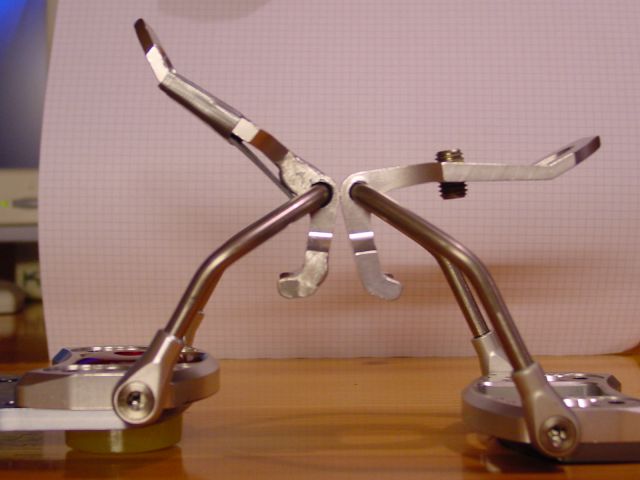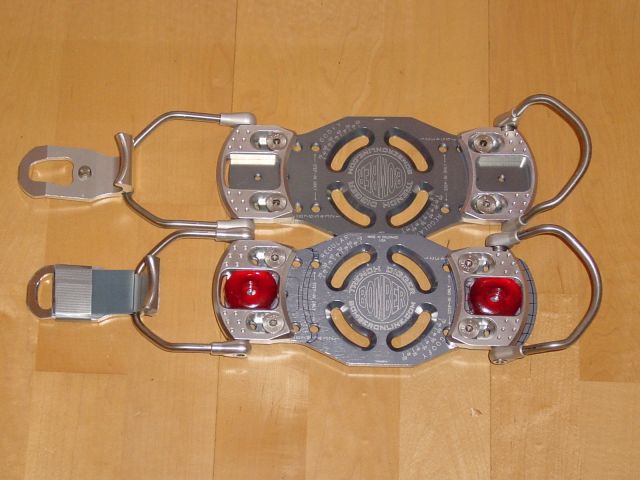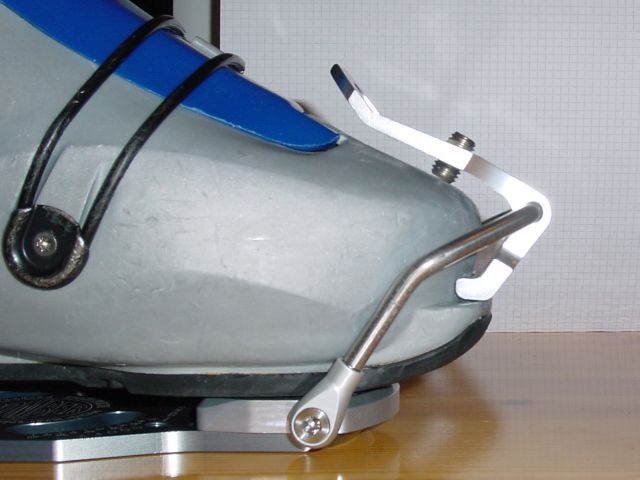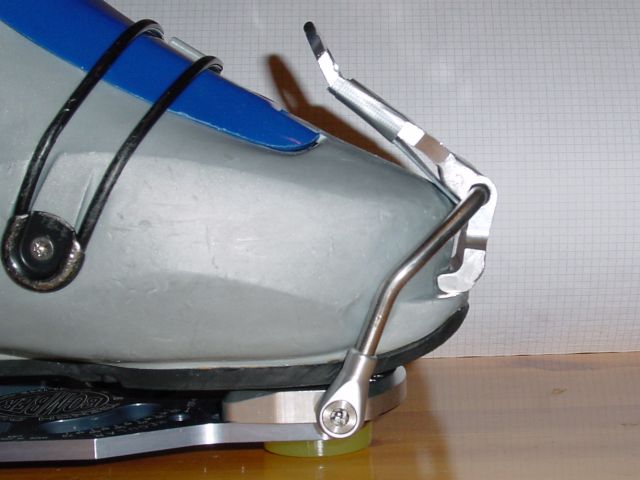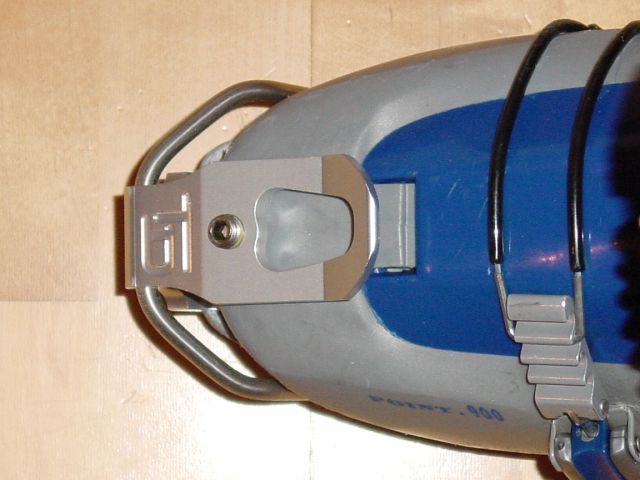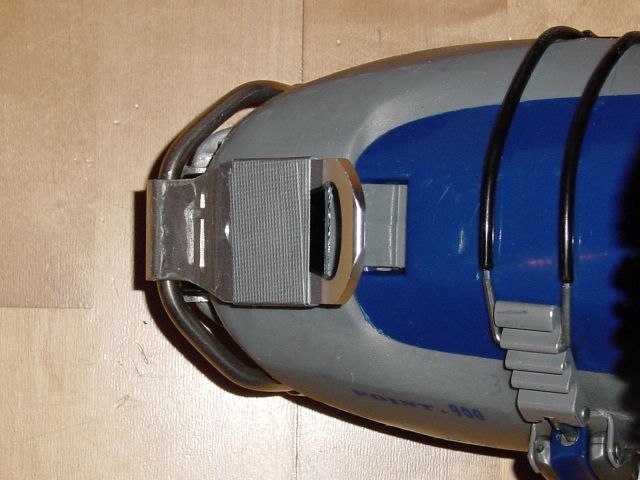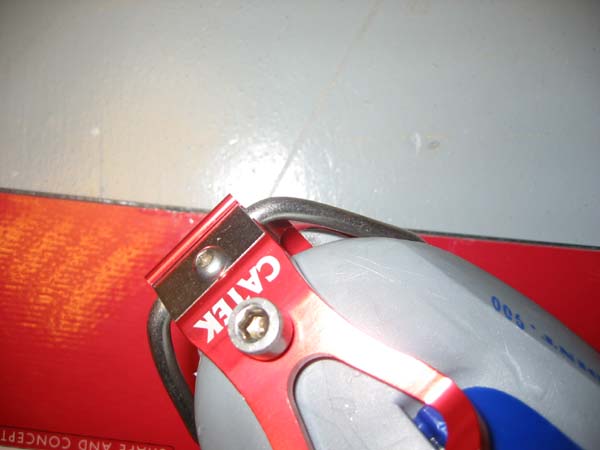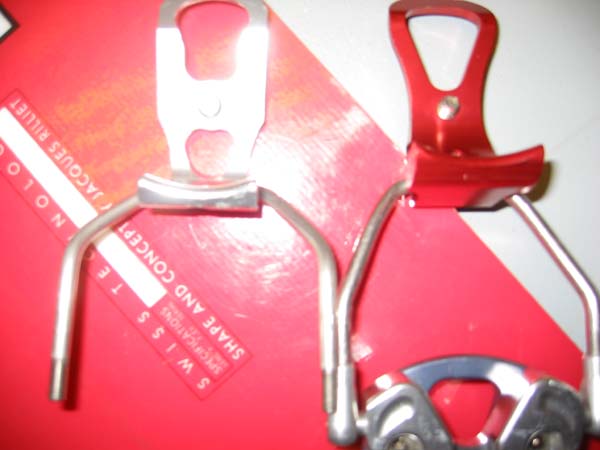After several weeks of testing the new TD2, I would like to submit a report. Please note that last year, I rode with the HEADs and TD1 bindings that are used here as references vs. the TD2. Also to decrease the bindings length by approximately 1cm, I modified the front bails and the aluminium toe clip.
First surprising impression: the incredible comfort! All vibrations and shocks are effectively filtered out by the suspension system. However, the feel with the board remain excellent (no floating sensation) and we can comit into a carve without any second thoughts. In fact, the TD2,s makes it not as hard or icy as it actually is.
Second impression: the board edges better and more progressively as if its edges are better sharpened.
After a few runs, I realized I could carve with more confidence in difficult snow conditions such as artificial icy snow or bumpy surface. All works in an easy way and one can comit more and more into the carve.
The lateral flex, which is so important in EC, is excellent and even allowed me to seriously tighten my bails in contrast to the TD1 on which I kept a bit of looseness in order to free my movements on the board.
However, after a little while, it felt ackward because my knees were now touching each other. I checked my bails and realize that the rear bails were bent to the inside (as if I had canting). Later, I realized that the front binding was bit loose and I noticed that the rear bail from the front binding was bent back to its original position but was flattened out a little (causing the looseness).
With the TD1, I also witnessed this problem but to a much lesser degree (just a little bit on the back binding rear bail). At the end of last season, I made custom bails with a slightly hard metal alloid that can be quenched in order to make it stiffer (the original bails were made with a hardened metal by **pulling it ** and therefore cannot be hardened). To lower the efforts, I also machined the cant disk in order to lower its height (and so the one of the whole binding) of –3mm.
Back on the slope.
The feeling of power is unbelievable! I can now comit into a carve without any feeling of material drawback (HEAD flobby-like or flexible bails). The resulting dymanic is a quantum leap forward, I exit every turn like a rocket and dive into the next turn without any hesitation or second thoughts. My Swoard 175 M can now freely flex thanks to the great Bomber system which now shows no sign of limitation: the board glides smoothly with a new acquired accuracy.
On the third day, during a full speed heelside turn, I heard a cracking noise and I felt as if my backfoot felt into a hole. I managed to stop without hurting myself (phew !!) and noticed the back binding bail was clearly broken on the front of the thread.
I contacted Fin Doyle, owner of BOMBER (with whom I exchanged great and passionate email debate on those new bindings) who said that in my case, the next step is to get the bails in titanium (very difficult to manufacture)!
The other solution (highly recommended by Fin for a year ago) is the step-in.
This system is known for one drawback when applied to EC: it has a poor lateral flex.
However, thanks to the new suspension system from the TD2, this problem should be solved especially with the Deeluxe Suzuka which has a more flexible shell when compared to the Northwaves.
I orderd a step in kit with those boots. I will let you know ASAP about the results.
Fin, I would like to thank you for your help, availability and kindness.
When my bails were holding during the two days, your bindngs were the best bindings I have ever tried. This is a quantum leap forward in binding design.
I realized this when I went back to my HEADs.
Conclusion:
Those new bindings allow a direct transfer of force to the edge (helped by my 84kg, thank you very much). They would highly stress the rest of the equipment. It seems like we reach the limit of what the bails can support. Let's hope that the step-in will hold....
Jacques

